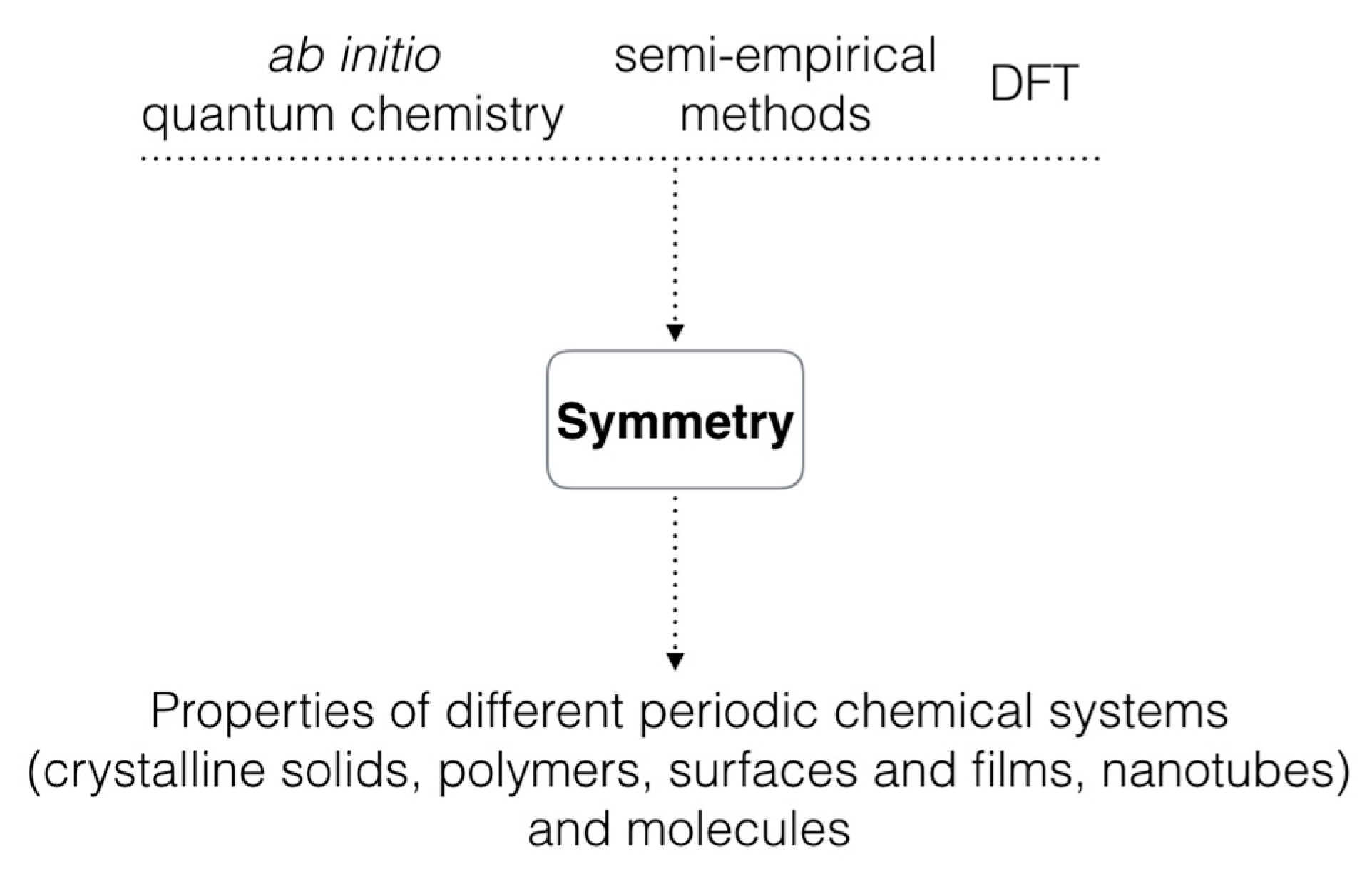Symmetry in Quantum and Computational Chemistry
Funding
Conflicts of Interest
References
- Cramer, C.J. Essentials of Computational Chemistry: Theories and Models, 2nd ed.; John Wiley & Sons, Inc.: Hoboken, NJ, USA, 2002; ISBN 978-0-470-09182-1. [Google Scholar]
- Lowe, J.P.; Peterson, K. Quantum Chemistry, 3rd ed.; Academic Press: Cambridge, MA, USA, 2005; ISBN 978-0124575516. [Google Scholar]
- Koch, W.; Holthausen, M.C. A Chemist’s Guide to Density Functional Theory, 2nd ed.; Wiley-VCH: Weinheim, Germany, 2001; ISBN 978-3527303724. [Google Scholar]
- Engel, E. Relativistic Density Functional Theory. In Handbook of Relativistic Quantum Chemistry; Liu, W., Ed.; Springer: Berlin/Heidelberg, Germany, 2017; ISBN 978-3-642-40766-6. [Google Scholar]
- Ullrich, C. Time-Dependent Density-Functional Theory: Concepts and Applications (Oxford Graduate Texts); Oxford University Press: Oxford, UK, 2012; ISBN 978-0199563029. [Google Scholar]

Publisher’s Note: MDPI stays neutral with regard to jurisdictional claims in published maps and institutional affiliations. |
© 2020 by the author. Licensee MDPI, Basel, Switzerland. This article is an open access article distributed under the terms and conditions of the Creative Commons Attribution (CC BY) license (http://creativecommons.org/licenses/by/4.0/).
Share and Cite
Novikov, A.S. Symmetry in Quantum and Computational Chemistry. Symmetry 2020, 12, 2028. https://doi.org/10.3390/sym12122028
Novikov AS. Symmetry in Quantum and Computational Chemistry. Symmetry. 2020; 12(12):2028. https://doi.org/10.3390/sym12122028
Chicago/Turabian StyleNovikov, Alexander S. 2020. "Symmetry in Quantum and Computational Chemistry" Symmetry 12, no. 12: 2028. https://doi.org/10.3390/sym12122028
APA StyleNovikov, A. S. (2020). Symmetry in Quantum and Computational Chemistry. Symmetry, 12(12), 2028. https://doi.org/10.3390/sym12122028




